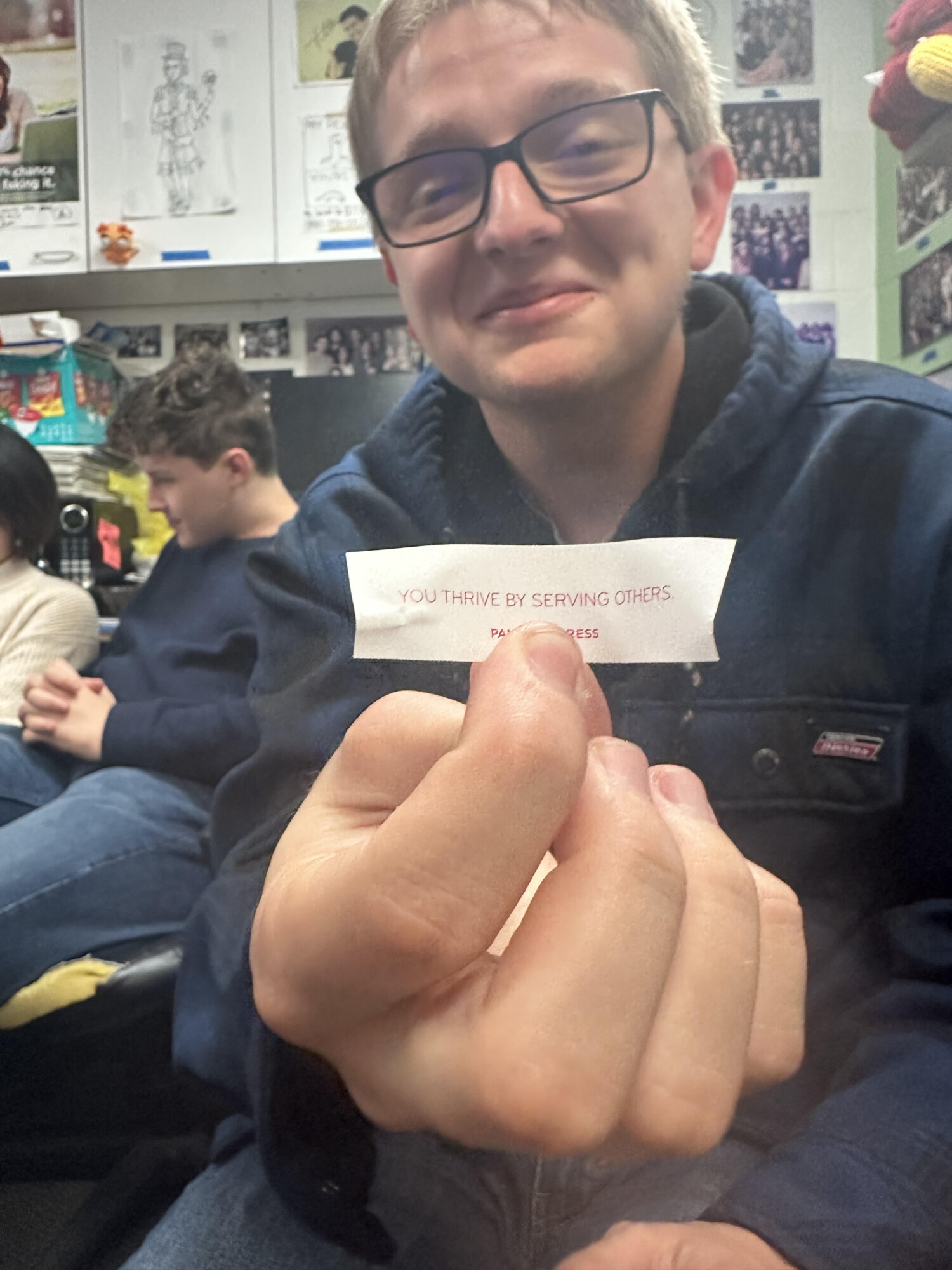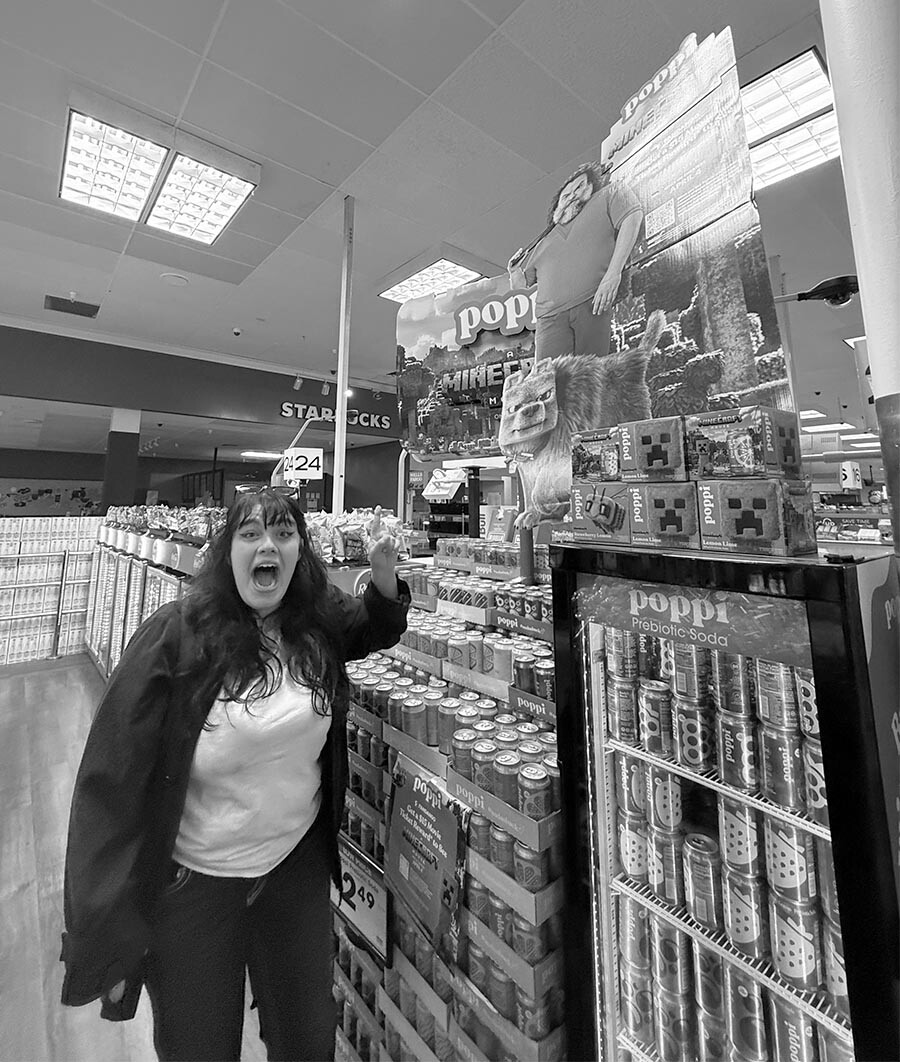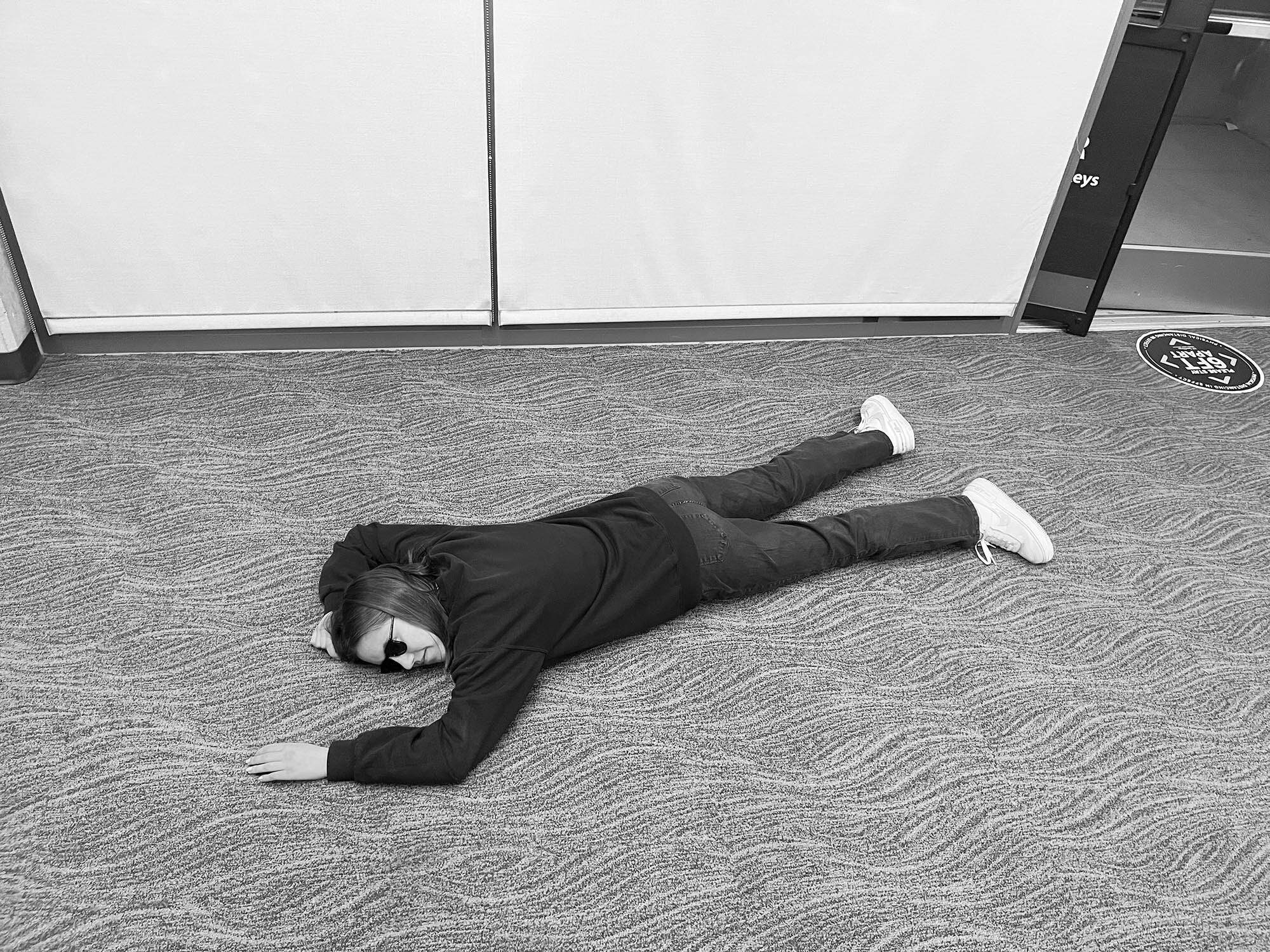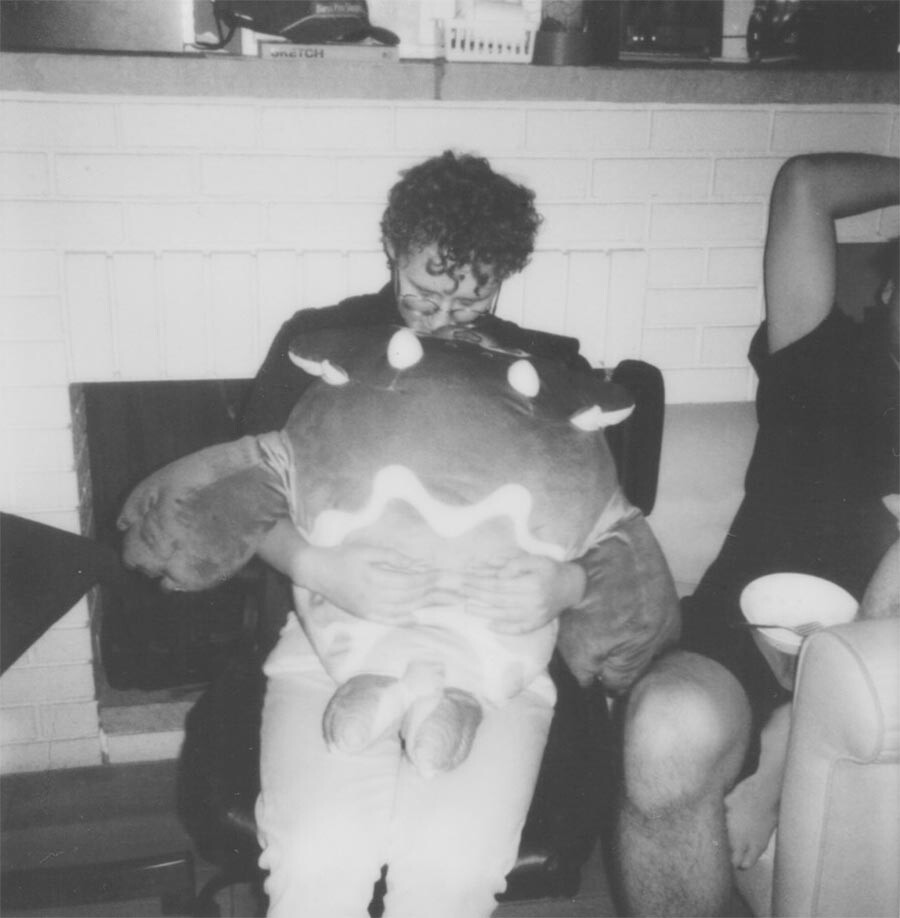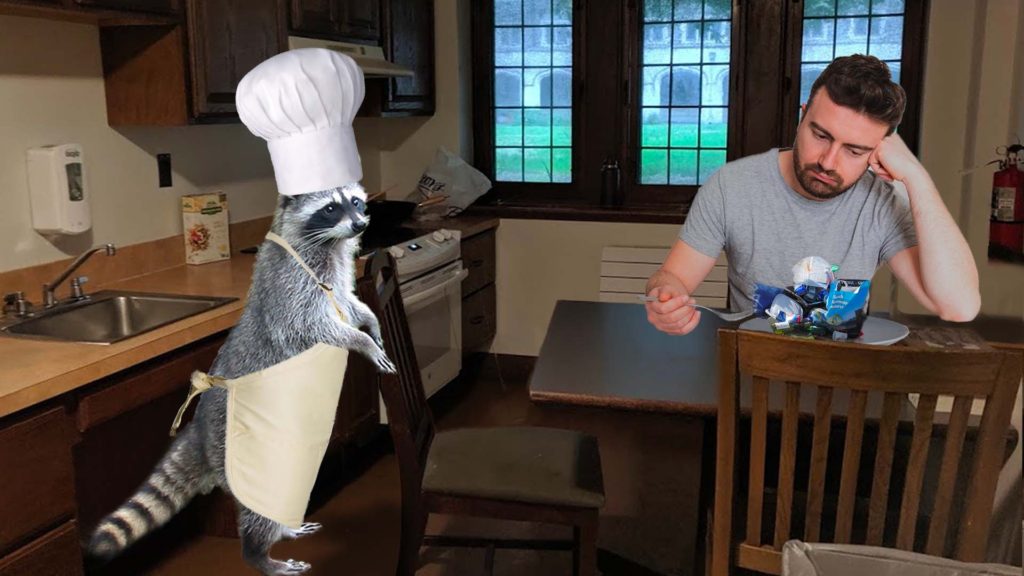
“This tastes like trash,” said Vingh. “Thank you,” said the raccoon.
Photo by Maria Dhilla
This year, understaffed dining halls have struggled to provide service to a record number of students at UCSD. According to dining hall workers, the overtime alone has caused “severe, debilitating back injuries.” As a result, campus-wide availability of nutritious sustenance has taken a hit. In the wake of this unprecedented dining hall crisis, students have taken it upon themselves to find shortcuts, and have turned to the next best solution: food-thrifting.
“One man’s trash is another man’s breakfast, and believe me, the trash is everywhere,” said Matthias Hoon-Gary, 19, as he pawed through the nearest trash disposal chute. “This chute is one of many hotspots on campus where you can find half-eaten wings, moldy fruits and vegetables, and expired containers of market grub. All popular commodities, free of charge!”
Students have flocked by the dozen between jampacked schedules to nab a bite on the go, and the widespread accessibility has only caused a rapid surge in popularity. “What we are seeing here is a phenomenon based on…well, what essentially amounts to socially acceptable dumpster-diving,” said Mack Incheez, an expert on adolescent groupthink. “Dumpster-diving” seems to have been redubbed “food-thrifting,” a trending hashtag in the online “Broke Student” Twitter community.
The similarities drawn between refuse enjoyers and UCSD’s de facto mascot animal have not gone unnoticed. Raccoons feature often in various Reddit dissertations and YouTube video essays explaining the food-thrifting lifestyle. Students have found themselves shoulder-to-shoulder with these wild animals in their food-seeking endeavors, and while some have adopted food-thrifting for the sole purpose of petting their night-bandit brethren, others do not find the presence of raccoons favorable.
“A trash-panda cuddle pile is cute, but I’d say the main appeal of this whole thing is the convenience,” said Star Vingh, 21. “To put it simply, a lot of us just don’t have the time to wait for our medium-rare Thai coconut chicken when we need to scooter 30 light-years to the nearest lecture hall. This lifestyle change isn’t about making friends with big garbage squirrels. It’s about efficiency, and frankly, the raccoons are just competition.”
The sentiment is not shared by Hoon-Gary. “Look, they’re really not that bad to work with. They show us the ropes around the dumpsters, have the same economic sense as us… Makes you feel like you’re not alone in the world. And if a raccoon cuddle-pile is what’s pulling more people into food-thrifting, great! There’s space in the community for all species.”
Pro-movement behavioral theorists say that “thrifting is a reinvigorated call to return to nature — an urban social movement of sorts, with the full blessing and active encouragement of UCSD itself.” Soon after the movement became popularized, UCSD administration announced that changes would be made as an act of solidarity with the students. “We could not be any prouder that UCSD is home to resourceful, environmentally-minded students who devise long-term solutions to benefit the future. We sincerely hope that our efforts to streamline the university’s waste disposal system will direct a significant amount of half-cooked protein into designated areas around campus for your convenience. Happy thrifting!”
Such a change deviates from UCSD’s usual modus operandi, indicating an acceptance that food-thrifting will have far-reaching effects. “This isn’t your typical Tik- Tok trend,” Hoon-Gary says. “I really think we got something going here, and it’s big, it’s growing, and definitely here to stay. If you’ll excuse me — a raccoon just stole my banana peel, and I need to get it back. He thinks he’s so fucking funny.”





